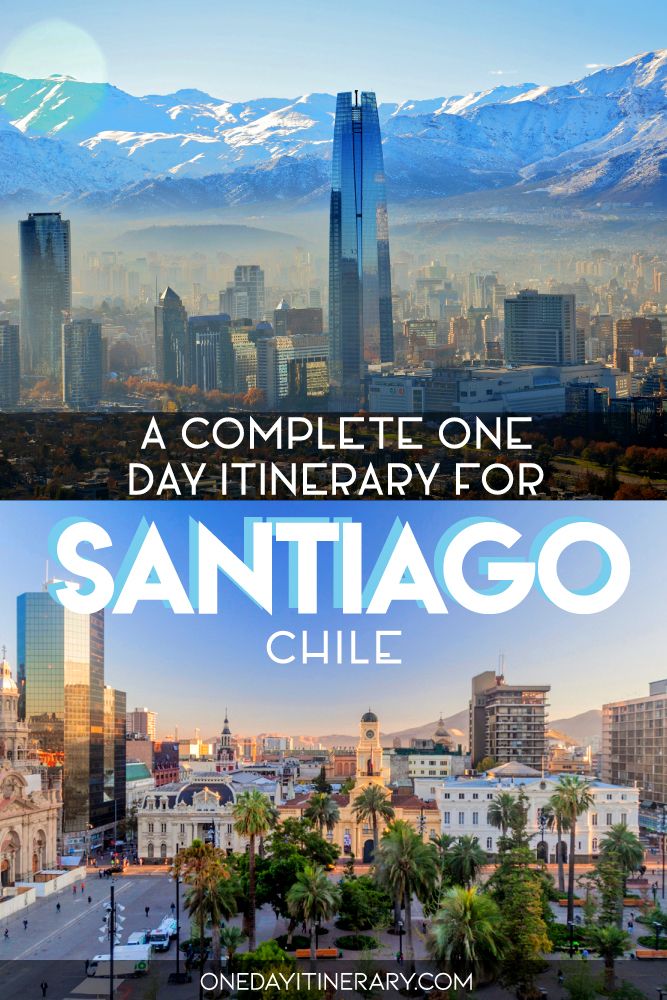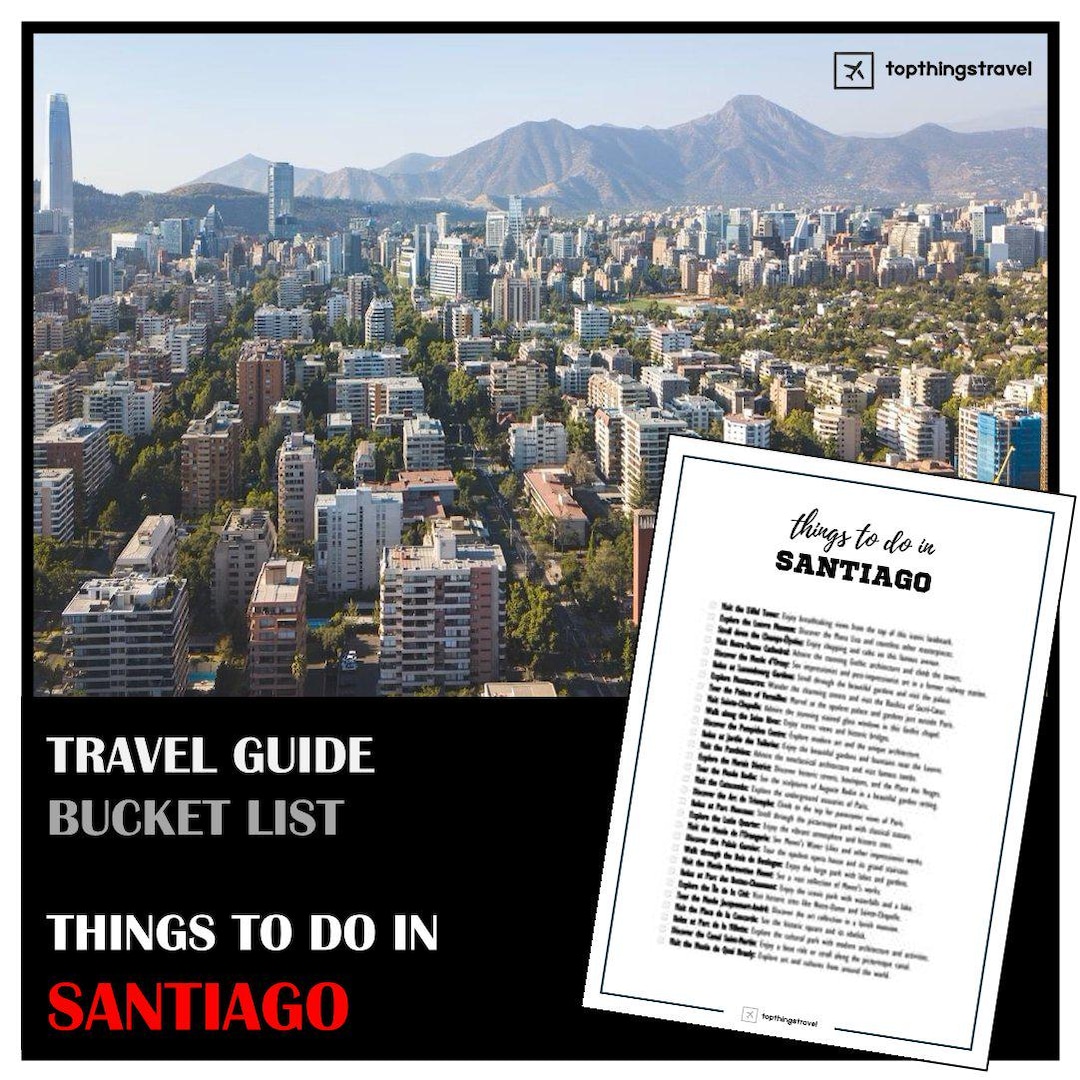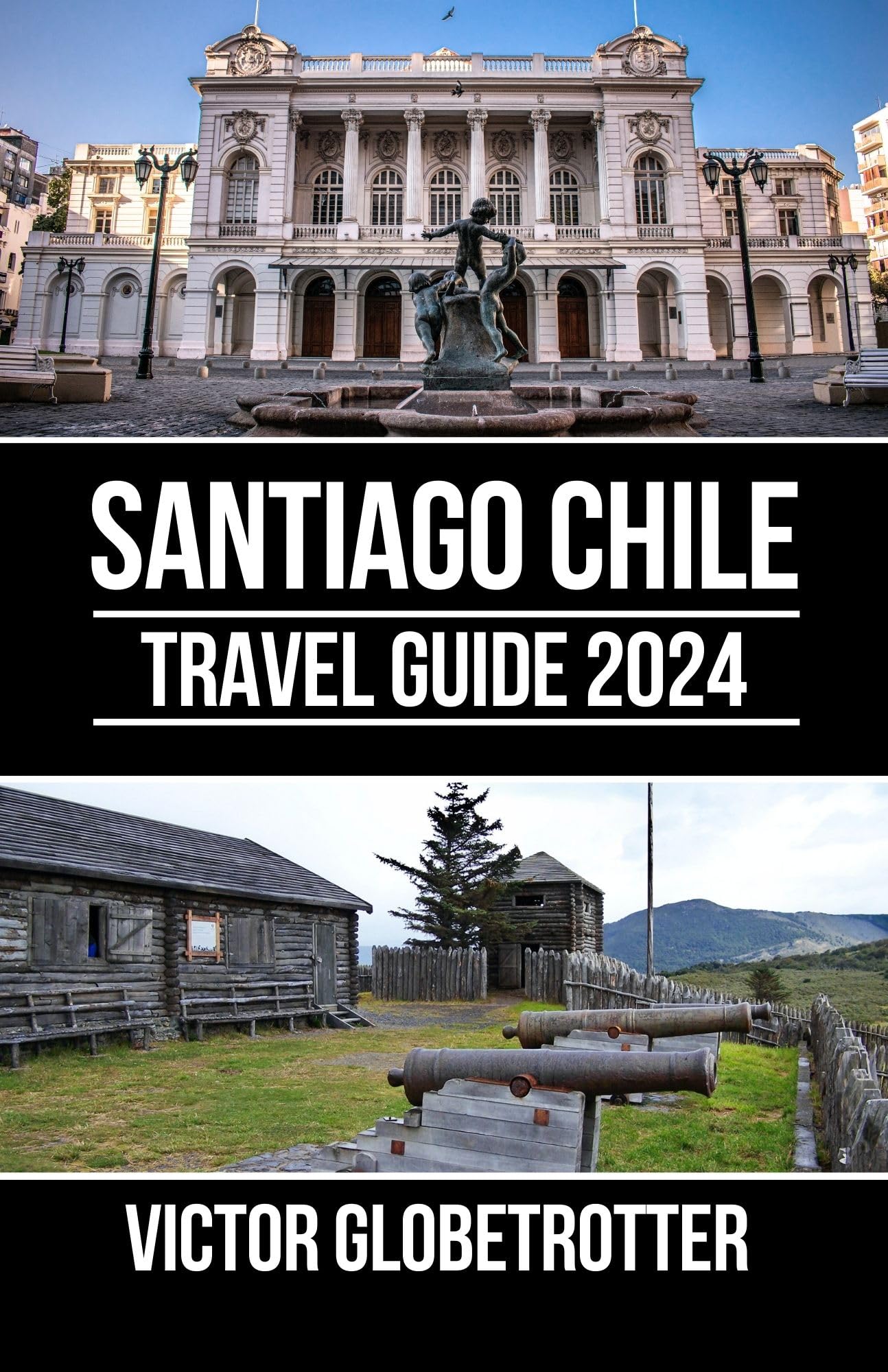
Nestled at the foot of the majestic Andes Mountains, Santiago, Chile’s bustling capital, is a city that effortlessly blends old-world charm with modern dynamism. From its colonial architecture and world-class museums to its vibrant culinary scene and proximity to breathtaking natural wonders, Santiago offers a captivating experience for every traveler. This comprehensive guide will equip you with everything you need to navigate and embrace the magic of this South American gem.
A Journey Through Time: Santiago’s Rich History
Santiago’s story begins in 1541 when Spanish conquistador Pedro de Valdivia founded the city on the Mapocho River. The indigenous Picunche people had long inhabited the fertile valley, and Valdivia recognized its strategic importance. Over centuries, the city grew, weathering earthquakes, fires, and periods of colonial rule before Chile declared its independence in 1818.

Related Articles about Santiago: A Vibrant Tapestry of History, Culture, and Adventure in the Heart of Chile:
- Bali: A Traveler’s Paradise – Your Ultimate Guide to the Island of Gods
- Portugal: A Tapestry of Sun-Kissed Shores, Ancient Tales, and Culinary Delights
- The Windy City Beckons: A Comprehensive Travel Guide to Chicago
- The Ultimate Travel Guide to London: A City of History, Culture, and Endless Discovery
- Samoa: A Jewel of the South Pacific – Your Ultimate Travel Guide
The 19th century saw significant development, with grand avenues and neoclassical buildings shaping the city’s urban landscape. The 20th century brought industrialization and further expansion, punctuated by periods of political upheaval, most notably the military coup of 1973 and the subsequent dictatorship. However, Santiago has emerged from these challenges as a resilient and forward-looking metropolis, proudly showcasing its history while embracing a progressive future.
Unveiling the Treasures: Top Attractions in Santiago
Santiago’s allure lies in its diverse range of attractions, catering to history buffs, art enthusiasts, foodies, and nature lovers alike.
-
Plaza de Armas: The historical heart of Santiago, this grand square is a living testament to the city’s past. Admire the stunning Metropolitan Cathedral, a neoclassical masterpiece, and the Palacio de la Real Audiencia de Santiago, now home to the National History Museum. The Central Post Office building, with its ornate facade, is another architectural gem. The plaza is a vibrant hub, often filled with street performers, artisans, and locals enjoying the sunshine.
-
Cerro San Cristóbal: For panoramic views of the city and the snow-capped Andes, a visit to Cerro San Cristóbal is a must. You can ascend via a scenic funicular or a cable car. At the summit, you’ll find a towering statue of the Virgin Mary, a sanctuary, and beautifully landscaped gardens. It’s the perfect spot for a leisurely stroll or a picnic with a breathtaking backdrop.

-
Barrio Lastarria: This bohemian neighborhood is a cultural melting pot, brimming with art galleries, independent bookstores, charming cafes, and independent boutiques. Wander its cobblestone streets, discover hidden courtyards, and soak in the artistic ambiance. The Centro Cultural Gabriela Mistral (GAM), a modern cultural center, hosts a variety of exhibitions, performances, and workshops.
-
Barrio Bellavista: Known for its vibrant nightlife and colorful bohemian charm, Bellavista is a district that truly comes alive after dark. It’s also home to La Chascona, one of Pablo Neruda’s three iconic houses, now a museum dedicated to the Nobel laureate poet. Explore the street art that adorns many of its buildings, adding to its unique character.
-
Museo Chileno de Arte Precolombino (Chilean Museum of Pre-Columbian Art): This exceptional museum houses a remarkable collection of artifacts from indigenous cultures across Latin America, offering a fascinating glimpse into their artistic achievements and spiritual beliefs. From intricate textiles to stone carvings and pottery, the museum provides a profound connection to the region’s ancient past.
-
Museo de la Memoria y los Derechos Humanos (Museum of Memory and Human Rights): A powerful and poignant institution, this museum documents the human rights violations that occurred during Chile’s military dictatorship. It’s a crucial space for reflection and understanding, serving as a reminder of the importance of democracy and justice.
-
Mercado Central (Central Market): Immerse yourself in the bustling atmosphere of Santiago’s main seafood market. Here, you can witness an incredible array of fresh produce, from exotic fruits to an astonishing variety of fish and shellfish. Enjoy a delicious seafood lunch at one of the market’s renowned restaurants, savoring the flavors of the Pacific.
-
Sky Costanera: For an unparalleled bird’s-eye view of Santiago, ascend to the observation deck of the Sky Costanera, located in the Gran Torre Santiago. This is the tallest building in South America, and the 360-degree vista from its summit is simply awe-inspiring, especially at sunset.
-
Parque Forestal: This expansive urban park stretches along the Mapocho River and offers a green oasis in the heart of the city. It’s a popular spot for locals to jog, cycle, picnic, or simply relax. The park also houses the Museo Nacional de Bellas Artes (National Museum of Fine Arts), showcasing a diverse collection of Chilean and international art.
Navigating Santiago: Practical Travel Tips
To make your Santiago adventure seamless and enjoyable, consider these essential travel tips:
-
Language: Spanish is the official language. While many people in tourist areas speak some English, learning a few basic Spanish phrases will greatly enhance your interactions and experiences. "Hola" (hello), "Gracias" (thank you), "Por favor" (please), and "Cuánto cuesta?" (how much does it cost?) are good starting points.
-
Currency: The official currency is the Chilean Peso (CLP). ATMs are widely available, and credit cards are accepted in most establishments. It’s advisable to carry some cash for smaller purchases or markets.
-
Safety: Santiago is generally a safe city, but like any major metropolis, it’s wise to be aware of your surroundings, especially in crowded areas. Keep your valuables secure and avoid displaying expensive items. Petty theft can occur, so be vigilant.
-
Tipping: Tipping is customary in restaurants, typically around 10% of the bill. For hotel staff and tour guides, a small tip is also appreciated.
-
Water: Tap water in Santiago is generally safe to drink, but if you have a sensitive stomach, it’s advisable to stick to bottled water.
-
Power Adapters: Chile uses Type L power outlets, with a voltage of 220V and a frequency of 50Hz. Ensure you have the correct adapter for your electronic devices.
-
Connectivity: Wi-Fi is readily available in hotels, cafes, and many public spaces. You can also purchase a local SIM card for your mobile phone to stay connected.
Rest Your Head: Accommodation Options
Santiago offers a wide spectrum of accommodation to suit every budget and travel style.
-
Luxury Hotels: For an opulent stay, consider hotels in areas like Las Condes or Providencia, which offer world-class amenities, impeccable service, and stunning city views. Examples include The Ritz-Carlton Santiago, W Santiago, and Mandarin Oriental, Santiago.
-
Boutique Hotels: Explore the charming boutique hotels scattered throughout neighborhoods like Barrio Lastarria and Barrio Bellavista. These offer a more intimate and personalized experience, often with unique design elements and a strong sense of local character.
-
Mid-Range Hotels: Plenty of comfortable and well-equipped mid-range hotels can be found in central Santiago, providing a good balance of comfort and affordability. Look in areas like Providencia and El Golf for reliable options.
-
Hostels: Backpackers and budget travelers will find a vibrant hostel scene in Santiago, particularly in areas like Barrio Bellavista. These offer dormitory-style rooms and private options, along with a social atmosphere and opportunities to meet fellow travelers.
-
Apartments and Airbnb: For longer stays or for those seeking more independence, renting an apartment through platforms like Airbnb is a popular and convenient option. This allows you to experience living like a local and often provides kitchen facilities.
Getting Around: Transportation in Santiago
Santiago boasts a well-developed public transportation system, making it easy to explore the city.
-
Metro: The Santiago Metro is one of the most efficient and modern subway systems in South America. It’s clean, safe, and covers most of the city’s major attractions. Purchase a rechargeable Bip! card to easily pay for your journeys.
-
Buses: A comprehensive network of public buses operates throughout Santiago. While they can be a bit more challenging to navigate for first-time visitors, they offer access to areas not covered by the metro. Use apps like "Moovit" to plan your bus routes.
-
Taxis: Taxis are readily available, but it’s advisable to use official taxis or ride-sharing apps like Uber or Cabify for safety and transparent pricing.
-
Ride-Sharing Apps: Uber and Cabify are widely used in Santiago and offer a convenient and often more affordable alternative to traditional taxis.
-
Walking: Many of Santiago’s most charming neighborhoods, such as Barrio Lastarria and Barrio Bellavista, are best explored on foot, allowing you to soak in the atmosphere and discover hidden gems.
-
Bicycle Sharing: Santiago has a growing bike-sharing program, offering a healthy and eco-friendly way to get around, especially along the designated bike paths.
The Perfect Time to Visit: Best Time to Go
Santiago experiences a Mediterranean climate with distinct seasons, each offering a unique appeal.
-
Spring (September to November): This is an ideal time to visit. The weather is pleasant and mild, with temperatures ranging from 15°C to 25°C (59°F to 77°F). The city bursts into bloom, and outdoor activities are particularly enjoyable.
-
Summer (December to February): Santiago enjoys warm and dry summers, with temperatures often reaching 30°C (86°F) and higher. It’s a great time for exploring the city and for day trips to nearby beaches or vineyards. However, it can be quite hot, so pack accordingly.
-
Autumn (March to May): This season offers beautiful fall foliage, especially in the surrounding hills. The weather is still pleasant, with cooler temperatures than summer, making it a comfortable time for sightseeing.
-
Winter (June to August): Santiago experiences cooler temperatures and some rainfall during winter, with average highs around 10°C (50°F). While it’s not ideal for extensive outdoor exploration, it’s a good time to visit museums, enjoy the city’s culinary scene, and potentially ski in the nearby Andes resorts, which are at their peak during this period.
Beyond the City Limits: Day Trips from Santiago
Santiago serves as an excellent base for exploring the diverse landscapes of central Chile.
-
Valparaíso and Viña del Mar: Embark on a day trip to the vibrant port city of Valparaíso, a UNESCO World Heritage site renowned for its colorful hillside houses, bohemian atmosphere, and artistic flair. Adjacent to Valparaíso is Viña del Mar, a more upscale beach resort town known for its beautiful gardens and lively promenade.
-
Wine Regions: Chile is world-famous for its wine, and several renowned wine valleys are easily accessible from Santiago. The Maipo Valley, Casablanca Valley, and Colchagua Valley offer wine tours, tastings, and picturesque vineyard landscapes.
-
Cajón del Maipo: For breathtaking mountain scenery and outdoor adventures, head to Cajón del Maipo. This stunning valley offers hiking trails, hot springs, and opportunities for rafting and horseback riding, all against a backdrop of dramatic Andean peaks.
-
Andes Mountains: Depending on the season, you can visit the Andes for skiing and snowboarding in winter or hiking and mountaineering in warmer months. Popular ski resorts include Valle Nevado, Portillo, and Farellones.
A Culinary Journey: Savoring Santiago’s Flavors
Santiago’s culinary scene is a delightful fusion of traditional Chilean flavors and international influences.
-
Seafood: Given its coastal proximity, fresh seafood is a must-try. Indulge in pastel de jaiba (crab pie), ceviche, and grilled fish.
-
Empanadas: These savory pastries, filled with various ingredients like beef, chicken, cheese, or seafood, are a ubiquitous and delicious snack or light meal.
-
Asado: Chilean barbecue, known as asado, is a social affair. Enjoy tender cuts of meat, often served with a variety of sides.
-
Choripán: A popular street food, this is a grilled chorizo sausage served in a bread roll, often with pebre (a spicy salsa).
-
Pisco Sour: No visit to Chile is complete without trying its national drink, the Pisco Sour, a refreshing cocktail made with pisco, lime juice, sugar, and egg white.
-
Wine: Complement your meals with Chile’s exceptional wines, from crisp Sauvignon Blancs to robust Carménère.
Santiago is more than just a capital city; it’s an experience. It’s a place where history whispers from colonial buildings, art flourishes in bohemian streets, and the majestic Andes stand as a constant, awe-inspiring presence. With this comprehensive guide, you are well-equipped to embark on an unforgettable journey through this vibrant South American tapestry. ¡Buen viaje!





